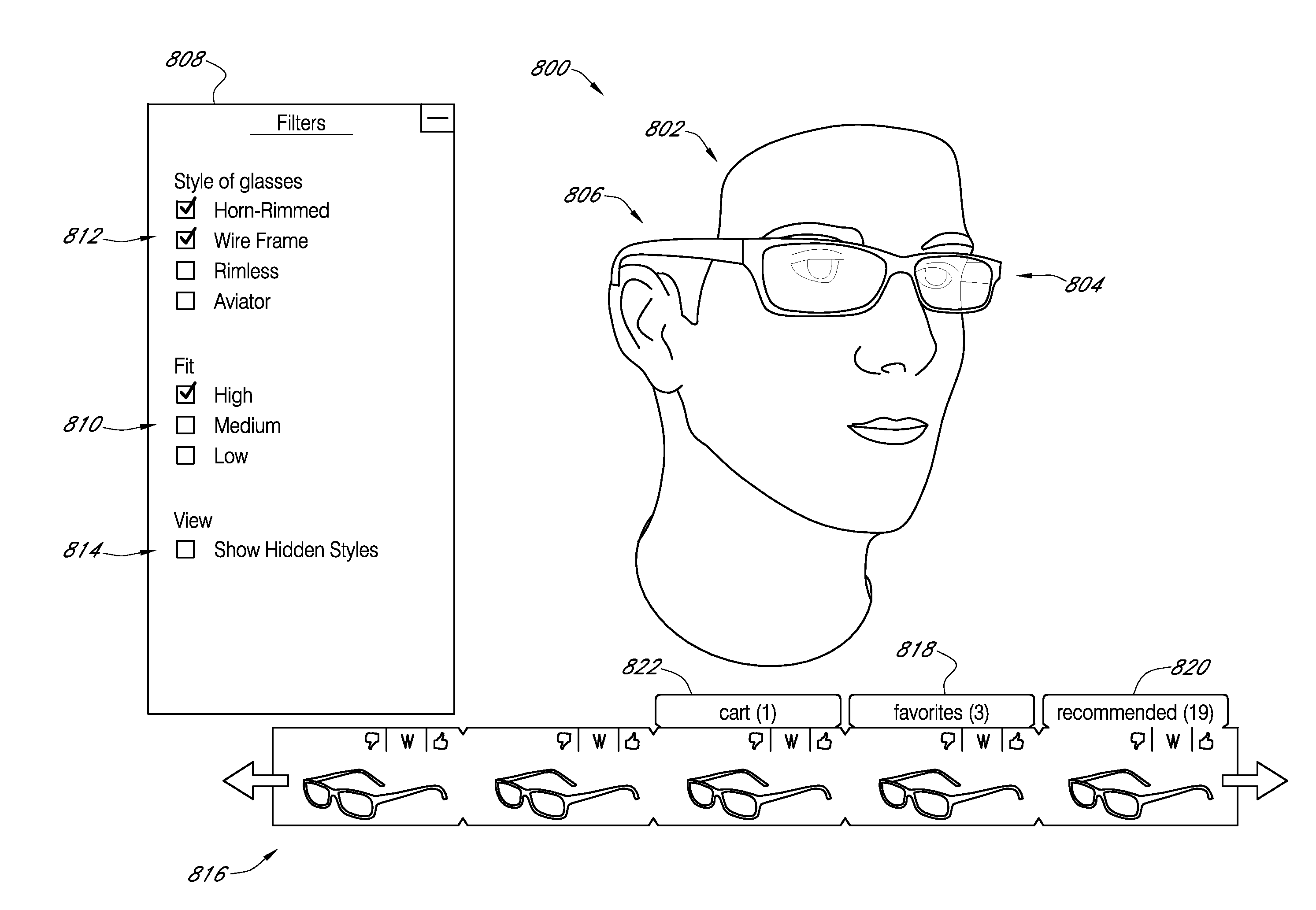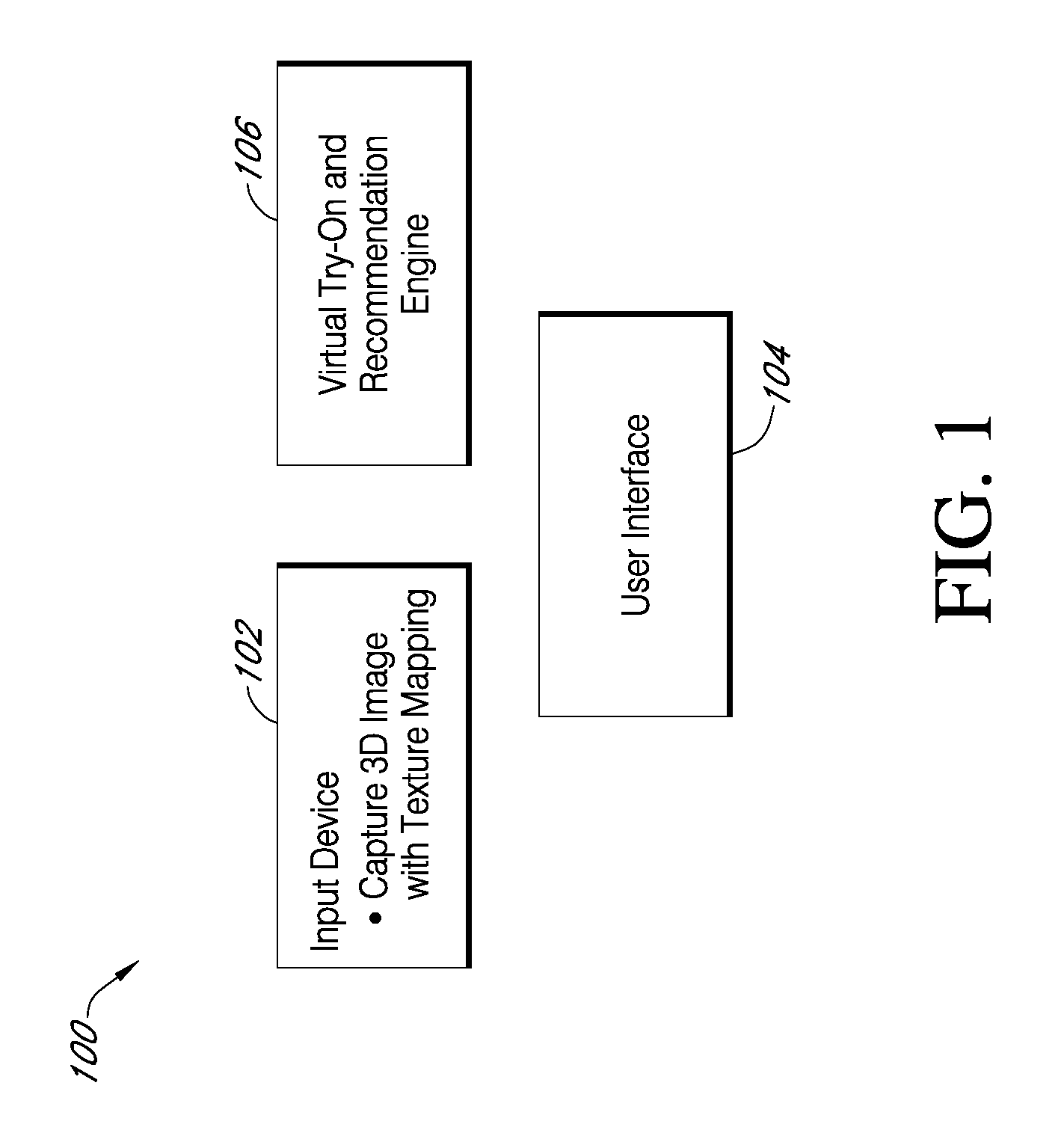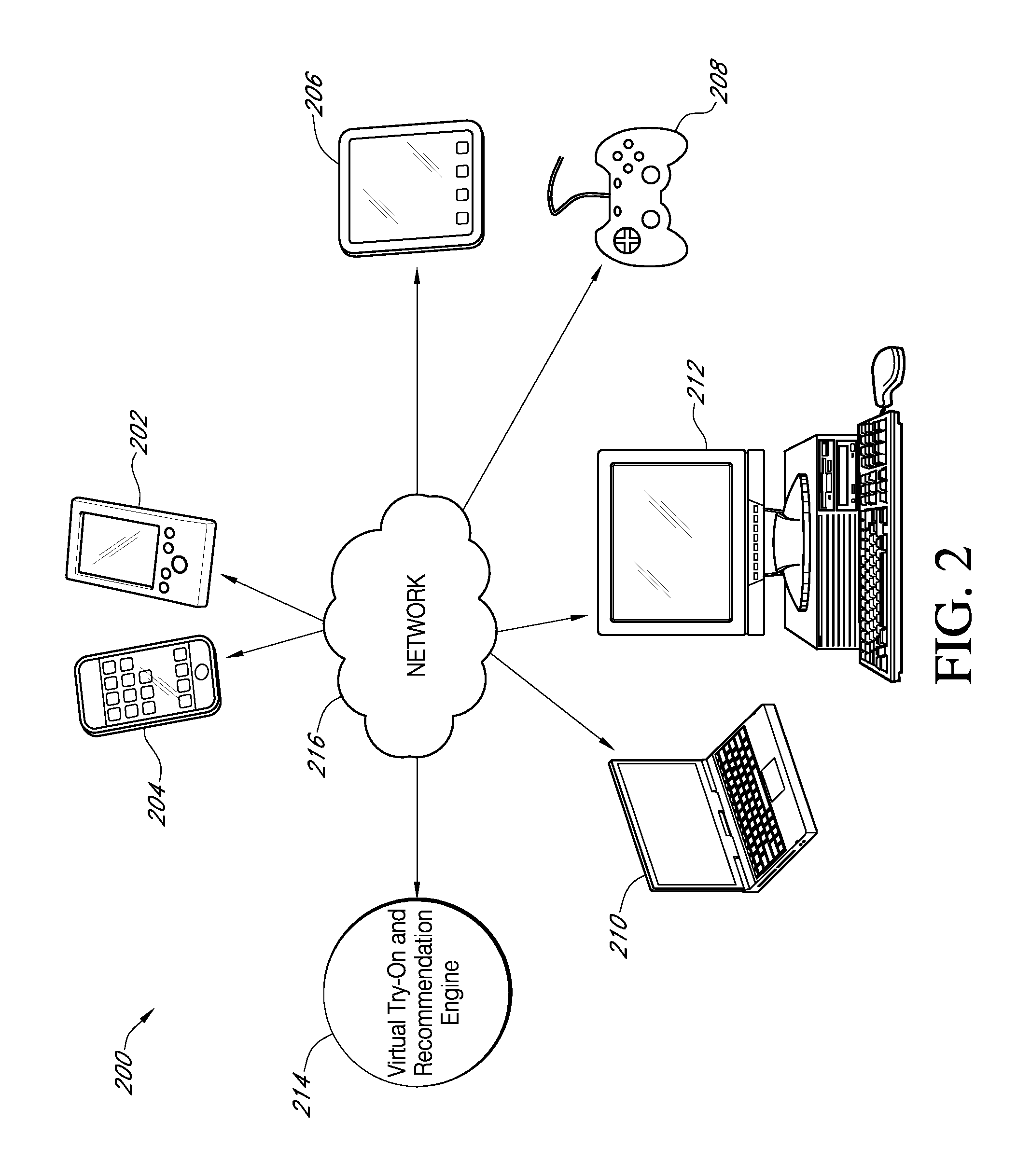Method for eyewear fitting, recommendation, and customization using collision detection
a technology of collision detection and eyewear, applied in the virtual field of eyewear fitting, can solve the problems of small margin of error in automatically acquiring measurements, no commercially available software for virtually trying on and accurately assessing the fit of eyewear frames, and little innovation in the overall shopping experience, so as to reduce the intimidation of excessively large inventory, and improve the overall user experience
- Summary
- Abstract
- Description
- Claims
- Application Information
AI Technical Summary
Benefits of technology
Problems solved by technology
Method used
Image
Examples
Embodiment Construction
[0021]In accordance with an exemplary embodiment of the present invention, FIG. 1 illustrates a virtual try-on system 100 comprised of various subcomponents. The subcomponents include an input device 102, a user interface 104, and a virtual try-on and recommendation system 106. The input device 102 may be a camera or a 3D scanner. In an embodiment of the present invention, the input device 102 may be any device that can generate a 3D image of a user. The system of FIG. 1 also includes a user interface 104. The user interface 104 allows the user to interact with system. In an embodiment of the present invention, the user interface 104 includes a screen, a keyboard, and one or more pointing or selecting devices such as a mouse, trackball, or track pad. In an embodiment of the present invention, the user interface may include a game controller or may be able to accept voice commands. In an embodiment of the present invention, the user interface 104 may also include a touch screen.
[0022...
PUM
 Login to View More
Login to View More Abstract
Description
Claims
Application Information
 Login to View More
Login to View More - R&D
- Intellectual Property
- Life Sciences
- Materials
- Tech Scout
- Unparalleled Data Quality
- Higher Quality Content
- 60% Fewer Hallucinations
Browse by: Latest US Patents, China's latest patents, Technical Efficacy Thesaurus, Application Domain, Technology Topic, Popular Technical Reports.
© 2025 PatSnap. All rights reserved.Legal|Privacy policy|Modern Slavery Act Transparency Statement|Sitemap|About US| Contact US: help@patsnap.com



